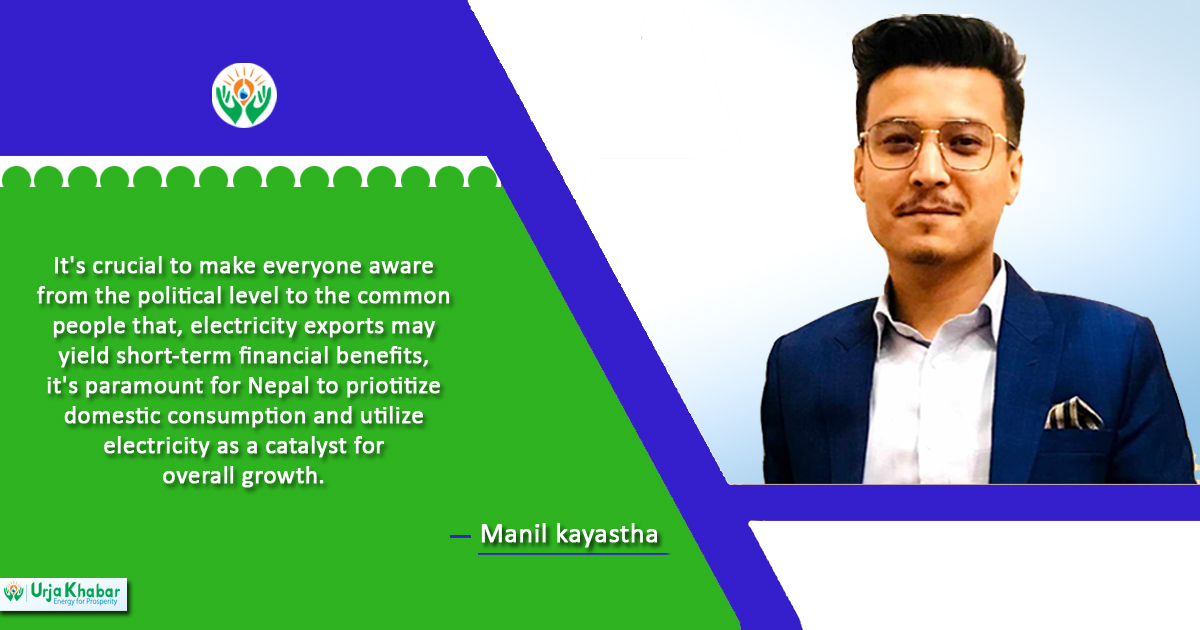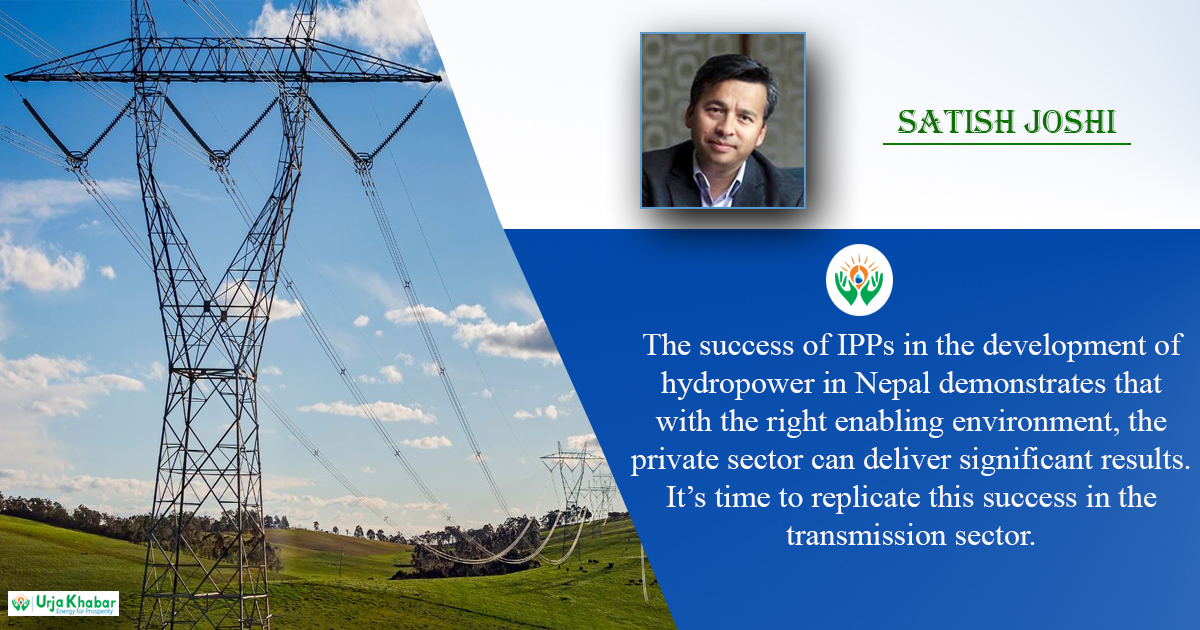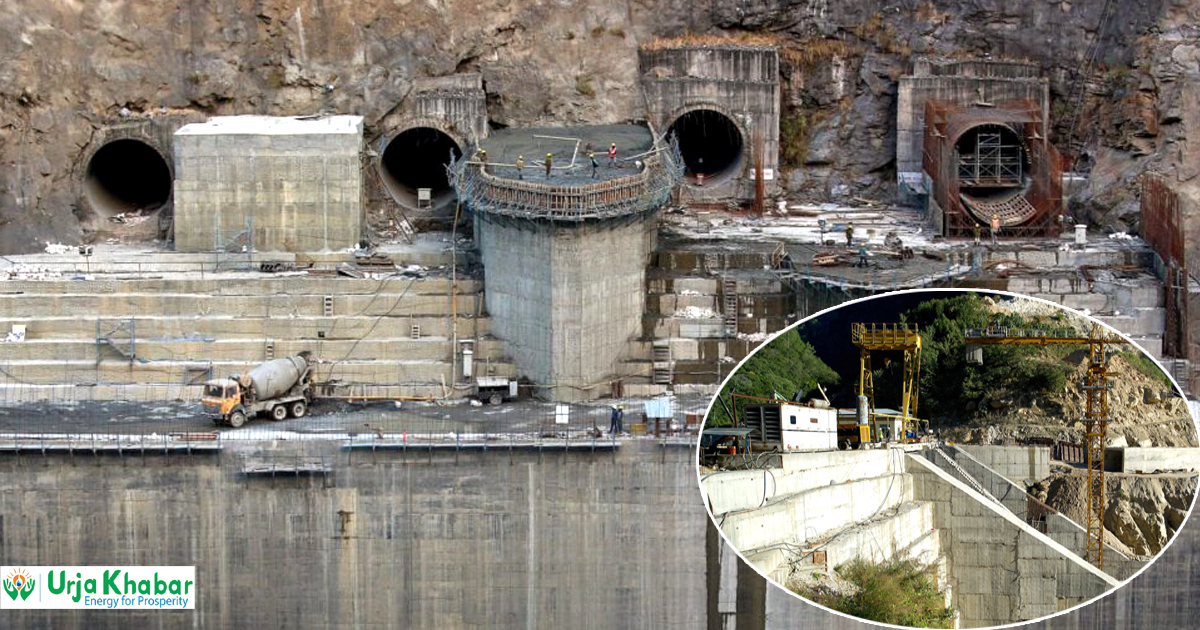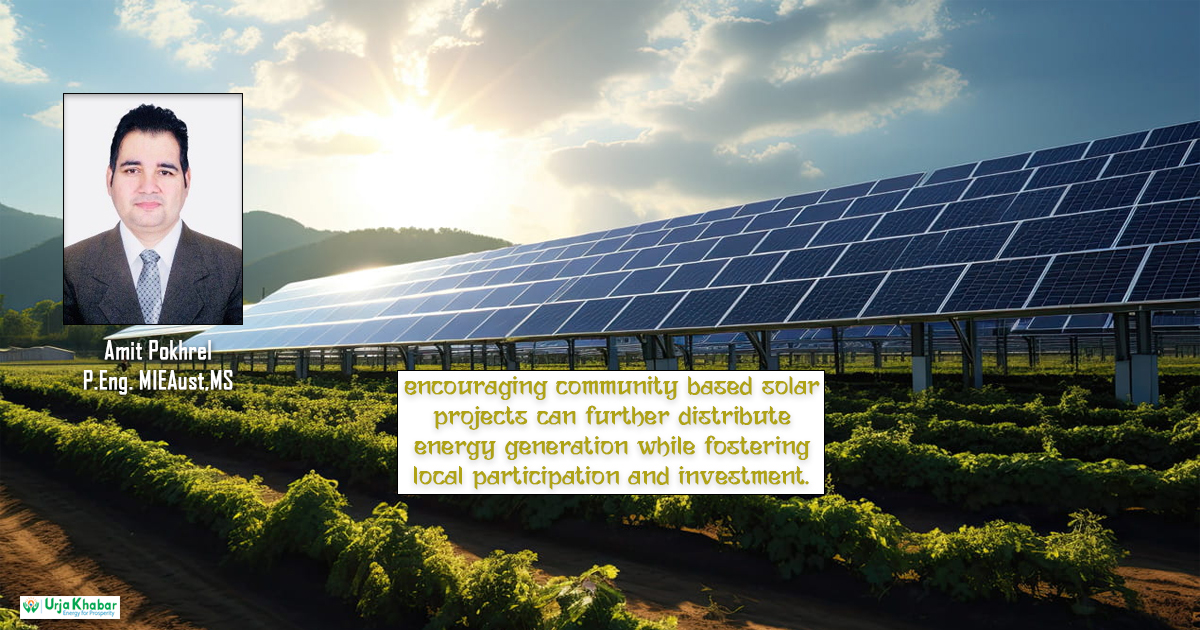Energy Update
Energy Priority Dilemma: Electricity Export vs. National Consumption

Nepal has abundant natural resources, particularly its hydropower potential, which presents significant opportunities for clean energy generation. The government has set ambitious targets, aiming for a total installed capacity of 28,500 MW, a per capita consumption of 1500 units, and an export capacity of 15,000 MW by 2035. But, the country is facing a critical decision making dilemma: whether to prioritize national consumption or to look more for export opportunities.
This ongoing debate regarding the energy sector, rigorously scrutinizes governmental strategies and the performance of the Nepal Electricity Authority (NEA) concerning national policies related to climate change, economic growth, and social equity. Criticism of the government's emphasis on exporting energy is increasing over time.

This debate revolves around two key aspects: firstly, the export compulsoriness driven by the nature of Run of River (ROR) projects and the seasonal variation in river discharge in Nepal, and secondly, the adherence to manage energy consumption in line with national policies addressing climate change, economic growth, affordability, and the enhancement of industrial and residential electricity distribution infrastructure and quality.
During dry seasons, the generation capacity of typical ROR hydropower plants can diminish to one-third of their total installed capacity. So, maintaining a balance between demand and supply is a crucial task. Consequently, Nepal needs to build hydropower infrastructure with a capacity three times larger than its actual national peak demand if it continues to rely on such energy harnessing system rather than focusing to build storage or pumped storage projects.

Nepal's national peak load stands at 1986.39MW, as reported in the NEA's Annual Report for 2022/23, signifying a minimal requirement of around 6,000 MW capacity plant to ensure self-sufficiency. Anticipating these ongoing challenges, there is an urgent need to develop strategic cross-border transmission infrastructure to export excess energy to neighboring countries like India and potentially Bangladesh, as well as to import energy as required in the Nepali market due to seasonal variations.
This necessity was highlighted during discussions following Prime Minister Pushpa Kamal Dahal's recent visit to India, resulting in a long-term Power Trade Agreement (PTA), particularly mentioning to export 10,000 MW electricity to India within 10 years. Consequently, the primary focus and attention are directed towards the development of transmission lines, cross-border infrastructure, and distribution networks within Nepal. However, a significant concern remains regarding the alignment of government plans and implementation strategies of NEA with the country's broader energy goals.
Strategic Consideration for Energy Transition and Sectorial Confrontation
Electricity generated from clean and renewable sources such as hydropower, solar, and wind has crucial role for global development. This recognition should be emphasized in political level following the technical, socio-economic, and academic discourses. In Nepal, when there is surplus electricity surpassing current national demand, prioritizing exports is unquestionably beneficial.
However, solely concentrating on exports neglects the strategic need to enhance domestic consumption. Through the reference of various researches and discourses in both academic and governmental levels suggests that electricity utility companies may prioritize exporting electricity as a means to generate quick profits and balance their financial accounts. While, exporting electricity may offer short-term financial benefits, focusing solely on this export-centric model risks neglecting the overall economic growth and development through strategic energy resource allocation and utilization.
Increasing electricity consumption domestically requires a more comprehensive and challenging approach compared to the export-centric strategy. Furthermore, implementing the mixture of energy ladder and energy stacking model to drive residential electricity consumption is a complicated challenge for the government. This involves analyzing various factors such as income, fuel pricing, literacy levels, availability of alternative cleaner fuels, household sizes, presence of domestic animal husbandry, societal inertial attitudes towards change and other socio-cultural aspects. These complexities highlight that achieving a complete transition towards household electricity consumption is not realistically feasible.
Currently, internal electricity consumption in Nepal is predominantly driven by the industrial and residential sector with about 80% of total internal sales of electricity, whereas consumption by transportation sectors is yet negligible but has huge potential to put on the demand of electricity through the transition to electric transportation. Eventhough, transitioning away from major fossil fuels such as diesel, petrol, LPG, and coal towards electricity presents an intense obstacle.
There has been a notable increase in electric vehicle (EV) adoption and the establishment of EV charging stations, there's still a need to expand the charging infrastructure to ensure consumer confidence, especially for long-distance travel. Despite some advancements, electric transportation remains at an early stage of development in Nepal, with petroleum fuels accounting for approximately 91% of the energy consumption in the transportation sector. However, there is a positive trend towards the adoption of EVs for private and small public transportation in Nepal.
The main challenge lies in both the industrial and residential sectors, as they represent significant consumers with diverse consumption patterns and intensities. Building necessary infrastructure such as transmission and distribution systems with capable transformers is essential, it also underscores the need to ensure a secure energy supply and competitive pricing for the industrial sector to enhance production efficiency. The government should attract investors and businesses to establish larger industries and incentivize them for transition to electricity as their primary energy source by moving away from reliance on petroleum products and coal. Furthermore, achieving this shift requires extensive restructuring and transforming of equipment and production systems in factories currently dependent on diesel, firewood, and coal.
The most significant challenge remains in the residential sector, where transitioning to electricity for cooking purposes, replacing traditional fuel wood and LPG, poses a considerable hurdle. Electric cooking is a major challenge, alongside transitioning all household heating tasks by using modern appliances such as electric heaters, water boiling mug and bathroom water heating (geysers), which are well known for their significant energy consumption. Achieving a fully electric household is not straightforward, particularly from an engineering perspective followed by the regulatory authorities. It requires an intensive study of the country's load demand nature, with a focus on addressing peaking load concerns.
Various ideas and methods have been discussed in recent years to increase internal consumption by promoting electric cooking. These discussions often revolve around pricing strategies, including subsidies such as free electricity, intensive discounts for the agricultural sector, reducing tariff rates, implementing peak and off-peak tariff rates, dry and wet season tariff rates, and even manipulating LPG prices to influence individuals to choose electricity as their primary cooking fuel. While many of these ideas have been discussed and implemented at the governmental level, they primarily focus on tariff rates and subsidies, neglecting real-world factors such as household sizes, literacy status, the presence of alternative cleaner fuels, households engaged in domestic animal husbandry, and other socio-cultural aspects. It can be considered as the main reason the government have been failing to meet its target of increasing the national electricity consumption.
Concerns Regarding Government Priorities
The government is well known about the extreme challenge of transitioning towards higher electricity consumption, addressing both management and engineering aspects. However, rather than confronting this challenge directly, they have chosen the path of least resistance by prioritizing electricity export through the construction of transmission infrastructure. This lack of emphasis on domestic distribution and residential consumption planning has drawn criticism towards the government and NEA, portraying them as “rent-seekers”. It's crucial to make everyone aware from the political level to the common people that, electricity exports may yield short-term financial benefits, it's paramount for Nepal to prioritize domestic consumption and utilize electricity as a catalyst for overall growth.
Balancing export opportunities along with the need for domestic consumption aligns with broader socio-economic goals and can ultimately contribute to the country's overall economic status and development. The government's focus on electricity consumption seems limited to the tariff rate restructuring and sectorial specific discounts, overlooking critical socio-economic factors which would ultimately make more difficult to achieve the national energy transition goals.
In conclusion, the focus should be rather on the positive externalities that contribute to the overall economic status of the country. While, reducing the trade deficit through electricity exports is not inherently wrong, the primary emphasis should be on increasing the national consumption. This approach could significantly boost productivity or the production efficiency, fostering the potential for the export of goods produced using electricity as a raw material, thereby reducing reliance on petroleum imports and shrinking the trade deficit.
Conversation
- Info. Dept. Reg. No. : 254/073/74
- Telephone : +977-1-5321303
- Email : [email protected]













